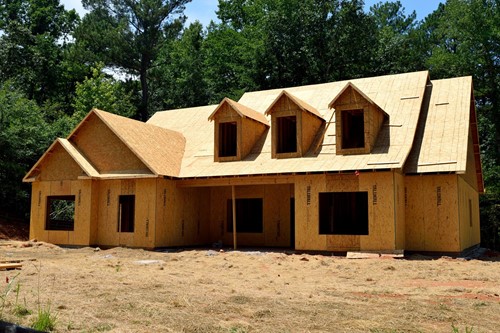
Image by Paul Brennan from Pixabay
Building a new home is more affordable than many people realize, and it’s sometimes even cheaper to build new than to buy previously owned. Some tactics can make what’s already an affordable home solution even more affordable.
If you’re looking to build but are on a budget, here are four ways to save money on new home construction.
1. Build Smaller
Building smaller provides obvious cost-saving measures, as fewer materials and less time are needed to construct the house. You’ll also likely save on future property taxes if you build a smaller home, since property assessments often factor in a home’s size.
While building smaller leaves you with less square footage, the amount of useable space that’s sacrificed can often be kept minimal. A small home that’s well-designed for your family’s lifestyle and needs can actually provide more useable space than a larger home that’s not as thoughtfully laid out. A practical floor plan and custom built-in features can maximize a small home’s space.
2. Forgo the Upgrades
Custom-built homes come with many optional upgrades, and you’ll undoubtedly want some of them. Only get those upgrades that you truly need and fall within your budget. Any you don’t have the funds for when building can be delayed until a future date.
Remember, upgrades are not mandatory. If you find yourself questioning which ones would be right for you, don’t add any for the time being. Spending some time in your home as-is gives you time to experience the house and then decide what upgrades would be most beneficial for you.
3. Finalize Everything Up Front
Before breaking ground, check and confirm all of your chosen options. You should be entirely confident in the decisions, because changing them once construction starts usually increases costs. You’ll save money overall if you take the time necessary to make all of your chosen decisions prior to actually starting work on the job site.
4. Ask About Finishing Certain Aspects
Many aspects of new home construction require skill and expertise, and your home builder’s team should complete all such parts of the building process. Toward the end of construction, however, there are some finishing touches that aren’t as specialized. You may be able to save money on construction costs if you complete some of these final items yourself.
Talk with your home builder about what you might be able to do on your own and ask them how much you could save by doing the work yourself. Whether this is permitted varies from builder to builder, but it can help when builders allow. Landscaping, interior painting and appliance installations are all good items to consider, depending on your skill set, available time and personal interest. A builder may know of other finishing items you can do, too.



